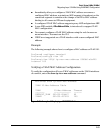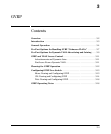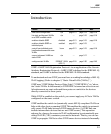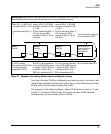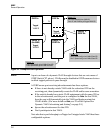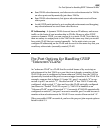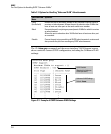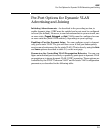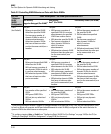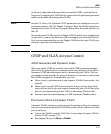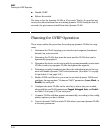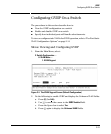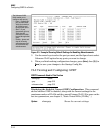
GVRP
Per-Port Options for Handling GVRP “Unknown VLANs”
■ Send VLAN advertisements, and also receive advertisements for VLANs
on other ports and dynamically join those VLANs.
■ Send VLAN advertisements, but ignore advertisements received from
other ports.
■ Avoid GVRP participation by not sending advertisements and dropping
any advertisements received from other devices.
IP Addressing. A dynamic VLAN does not have an IP address, and moves
traffic on the basis of port membership in VLANs. However, after GVRP
creates a dynamic VLAN, you can convert it to a static VLAN. Note that it is
then necessary to assign ports to the VLAN in the same way that you would
for a static VLAN that you created manually. In the static state you can
configure IP addressing on the VLAN and access it in the same way that you
would any other static (manually created) VLAN.
Per-Port Options for Handling GVRP
“Unknown VLANs”
An “unknown VLAN” is a VLAN that the switch learns of by receiving an
advertisement for that VLAN on a port that is not already a member of that
VLAN. If the port is configured to learn unknown VLANs, then the VLAN is
dynamically created and the port becomes a tagged member of the VLAN. For
example, suppose that in figure 3-2 (page 3-6), port 1 on switch “A” is con-
nected to port 5 on switch “C”. Because switch “A” has VLAN 22 statically
configured, while switch “C” does not have this VLAN statically configured
(and does not “Forbid” VLAN 22 on port 5), VLAN 22 is handled as an
“Unknown VLAN” on port 5 in switch “C”. Conversely, if VLAN 22 was statically
configured on switch C, but port 5 was not a member, port 5 would become a
member when advertisements for VLAN 22 were received from switch “A”.
When you enable GVRP on a switch, you have the per-port join-request options
listed in table 3-1:
3-7



